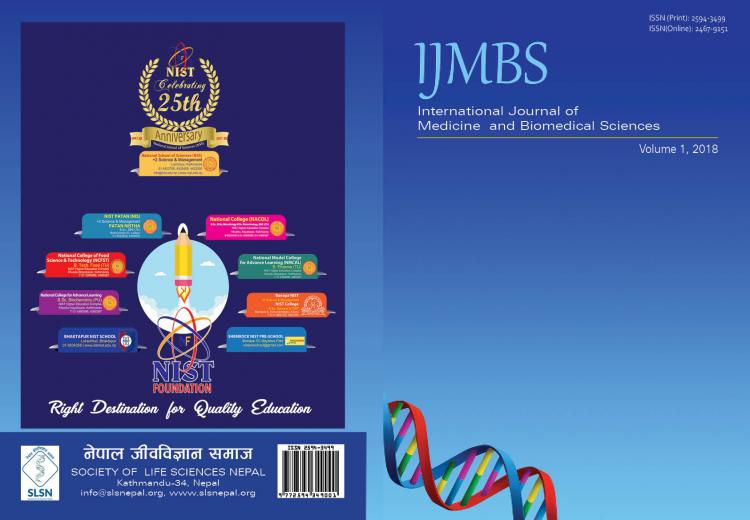Antibiotic Susceptibility Pattern of Urinary Isolates from a Tertiary Care Hospital in Kathmandu.
DOI:
https://doi.org/10.55530/ijmbiosnepal.v2i1.21Keywords:
UTI, Antibiotic susceptibility pattern, Escherichia coliAbstract
Urinary tract infection (UTI) is the commonest clinical condition encountered by the clinicians worldwide. The present research was conducted to find out bacterial pathogens responsible for UTI and their antimicrobial susceptibility patterns. The study was done in the Department of Microbiology, Nepalese Army Institute of Health Sciences (NAIHS), Kathmandu, Nepal. Total 450 clean catched midstream urine (MSU) samples were collected, processed, identified and their susceptibility patterns to commonly used antimicrobial agents were recorded according to the CLSI (Clinical Laboratory Standard Institute) guidelines. Out of 450 samples, 108 (24.0%) showed bacterial growth in which UTI occurred more in female with 84 isolates (77.8%) than in male 24 (22.2%). Escherichia coli was the predominant bacterial isolate and accounted for 80 (74.1%) of the total UTI cases followed by Klebsiella pneumoniae 11 (10.2%), Proteus mirabilis 5 (4.6%), Pseudomonas aeruginosa 4 (3.7%), Staphylococcus aureus 4 (3.7%), Staphylococcus saprophyticus 2 (1.9%), and Enterococcus species 2 (1.9%). The isolates were more sensitive to cefotaxim, amikacin, ofloxacin and norfloxacin. Most of the strains isolated were resistant to ampicillin, nalidixic acid, nitrofurantoin, cotrimoxazole followed by ciprofloxacin and gentamycin. The resistant patterns of urinary isolates with 3rd generation cephalosporin are increasing due to irrational and empirical use of antibiotics.
Downloads
Published
How to Cite
Issue
Section
License
Copyright (c) 2016 International Journal of Medicine and Biomedical SciencesIJMBioS follows the following Terms and License of the manuscript under Attribution-NonCommercial 4.0 International (CC BY-NC 4.0) where Author and Journal are can Share — copy and redistribute the material in any medium or format and Adapt — remix, transform, and build upon the material, and it is Non-Commercial.





